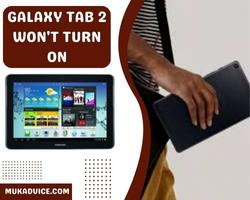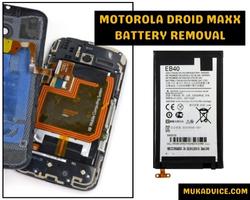You’ve plugged your iPhone into your PC, ready to transfer photos, back up data, or sync files, but nothing happens—your iPhone simply doesn’t appear. Sound familiar? You’re not alone! This issue can be frustrating, especially when you’re counting on a seamless connection to get things done.
The good news? This problem is usually caused by common, fixable issues like faulty cables, outdated software, or missing drivers. In some cases, it might even be as simple as a trust setting on your iPhone or a small glitch in your PC’s system.
In this guide, we’ll walk you through all the possible causes and solutions for when your iPhone won’t show up on your PC. Whether you’re a tech novice or a seasoned gadget enthusiast, our step-by-step troubleshooting methods will help you resolve the problem and get back on track.
No more wasted time trying to figure out what’s wrong—this guide is designed to make your life easier.
iPhone won’t show up on pc
Ready to fix it? Let’s dive in and bring your devices back in sync!
Why Doesn’t Your iPhone Show Up on Your PC?
Before jumping into solutions, understanding the root cause can help you apply the right fix. Here are the most common reasons:
Faulty Cable or USB Port
A damaged or incompatible cable can disrupt the connection. Similarly, a malfunctioning USB port on your PC could be to blame.
Outdated Software
If your iPhone or PC software isn’t up to date, compatibility issues might prevent your device from appearing.
Missing Drivers
Windows relies on drivers to recognize devices like iPhones. Without the correct drivers, your PC won’t detect your phone.
Trust Issue
When connecting your iPhone to a new computer, a prompt appears asking if you “Trust This Computer?” If you accidentally decline, the connection will be blocked.
Third-Party Security Software
Overzealous antivirus or firewall settings might block your PC from recognizing your iPhone.
Hardware or iOS Issues
Sometimes, the problem lies within the iPhone itself, such as a damaged Lightning port or an iOS bug.
Quick Checks Before You Begin
Restart Your Devices
A simple restart can resolve minor software glitches on both your iPhone and PC.
Inspect the USB Cable and Port
- Use an Apple-certified cable.
- Test the cable with another device to ensure it works.
- Try a different USB port on your PC.
Unlock Your iPhone
Ensure your iPhone is unlocked and on the home screen before connecting.
Check the Connection Prompt
When prompted, select Trust This Computer on your iPhone.
If these quick checks don’t solve the issue, move on to the detailed fixes below.
Detailed Fixes to Make Your iPhone Show Up on Your PC
1. Update Your Software
- On Your iPhone:
- Go to Settings > General > Software Update.
- If an update is available, tap Download and Install.
- On Your PC:
- Update Windows via Settings > Update & Security > Check for Updates.
- Ensure iTunes (if installed) is updated by opening it and going to Help > Check for Updates.
2. Install or Reinstall iTunes
iTunes plays a critical role in syncing and detecting your iPhone.
- Download the latest version of iTunes from the Apple website or Microsoft Store.
- If iTunes is already installed, uninstall it and reinstall to ensure all components are properly set up.
3. Check Your Drivers
Windows requires Apple Mobile Device USB drivers to recognize your iPhone.
- Connect your iPhone to your PC.
- Open Device Manager (Press
Win + X> Select Device Manager). - Look for your iPhone under Portable Devices or Universal Serial Bus Controllers.
- If you see a yellow warning symbol:
- Right-click your iPhone > Update Driver > Search automatically for updated driver software.
4. Reset Trust Settings
If you accidentally selected “Don’t Trust” on your iPhone, you’ll need to reset the trust settings:
- On your iPhone, go to Settings > General > Transfer or Reset iPhone > Reset > Reset Location & Privacy.
- Reconnect your iPhone to your PC and select Trust This Computer when prompted.
5. Disable Security Software Temporarily
Your antivirus or firewall could be blocking the connection. Temporarily disable them and check if your iPhone appears on your PC.
- Remember to re-enable your security software after testing!
6. Use a Different Connection Mode
Sometimes, using a different connection mode can help your PC detect the iPhone:
- Connect your iPhone to the PC.
- Open File Explorer.
- Look for your iPhone under This PC or Devices and Drives.
If it doesn’t show up, try toggling your iPhone’s Personal Hotspot on and off via Settings > Personal Hotspot.
What If None of These Fixes Work?
Check for Hardware Issues
- Inspect the Lightning Port: Use a flashlight to check for dust or debris in your iPhone’s port. Clean it gently with a toothpick or compressed air.
- Test on Another PC: If your iPhone works on a different PC, the problem lies with your computer.
Restore Your iPhone
If all else fails, restoring your iPhone might solve the issue:
- Backup your data using iCloud or iTunes.
- Go to Settings > General > Transfer or Reset iPhone > Erase All Content and Settings.
Contact Apple Support
If the problem persists, it might be time to seek professional help from Apple Support.
Preventing Future Issues
- Regularly update your iPhone and PC software.
- Use certified cables and accessories.
- Avoid using public or untrustworthy charging stations.
Conclusion
If your iPhone isn’t showing up on your PC, it can be frustrating, but it’s definitely a solvable issue. By following the steps outlined in this guide, you can troubleshoot and resolve the most common causes whether it’s a simple cable issue, outdated software, or a settings problem.
Remember, a few basic checks, like restarting your devices, ensuring you have the right drivers, and confirming your trust settings, can often solve the problem.
If the solutions provided don’t work immediately, don’t get discouraged! Sometimes, it takes a little trial and error to figure out exactly what’s causing the issue. Whether it’s a USB port malfunction, an iTunes glitch, or even a deeper hardware issue, being methodical and patient will pay off.
In the rare case that your iPhone still isn’t showing up, don’t hesitate to reach out to Apple Support for professional assistance.
By staying proactive and keeping your devices updated, you can prevent these problems from cropping up in the future. So, go ahead and reconnect your iPhone to your PC with confidence, knowing you have the tools and knowledge to tackle any tech hiccup!






